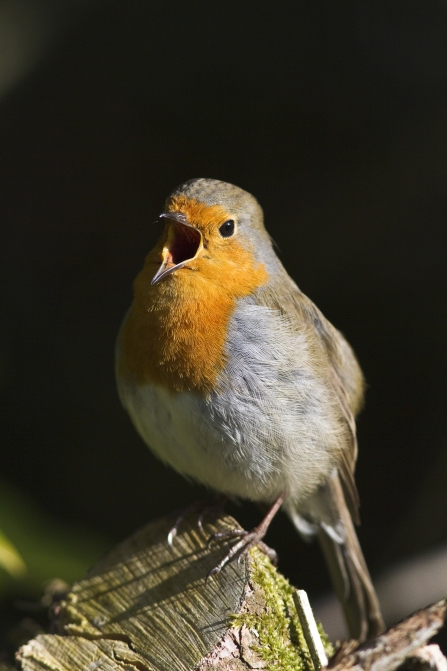
Credit: @Harry Hogg
With its distinctive red breast, males and females are practically identical while juveniles develop their red feathers after their first moult, beginning life with a smattering of golden spots. Each red brest is slightly different so individual robins can be identified with careful attention to detail.
Robins are year round songbirds and are often one of the earliest participants of the dawn chorus. They use their song to mark their territory though winter and spring songs are quite different. You can hear their song here.
The breeding season begins around March, earlier if a mild winter. The female lays 4-6 distinctive blue eggs per clutch, with usually 2, but occasionally up to 4, clutches per breeding season which can last till July. She lays 1 egg a day, in total each clutch can weigh up to 90% of her own bodyweight – so extra food is important. Robins prefer to eat from the ground so a tray of sunflower seeds left out for them to find is a great way to encourage them to visit, if you really want to treat them, mealworms are their favourite favourite and adding a handful will definitely get their attention! Baby robins fledge at just two weeks but the parents continue to look after and feed them for a further three weeks.
Originally, robin redbreast was simply known as redbreast, but acquired Robin as Victorians liked to give names to birds, which is also where the colloquial Jenny wren came from, indeed, his relationship with Jenny Wren was immortalised in several versions of the tragic poem ‘The wedding of Robin Redbreast and Jenny Wren’ and is part of the huge amount of folklore surrounding robins: From the story that the robin used to be brown and acquired his red breast from a splash of the blood of Christ when he plucked a thorn from the son of god’s head as he was dying on the crucifix, to the one where the red came from a burn from the fire he was fanning to keep the baby Jesus warm. While, like all wild birds, the robins nest and eggs are protected, it has long been thought unlucky to steal or tamper with robin eggs, possibly due to the religious connotations above. Even prior to the 1981 Countryside and Wildlife Act there were fewer reports of robins nests being disturbed than many others.
